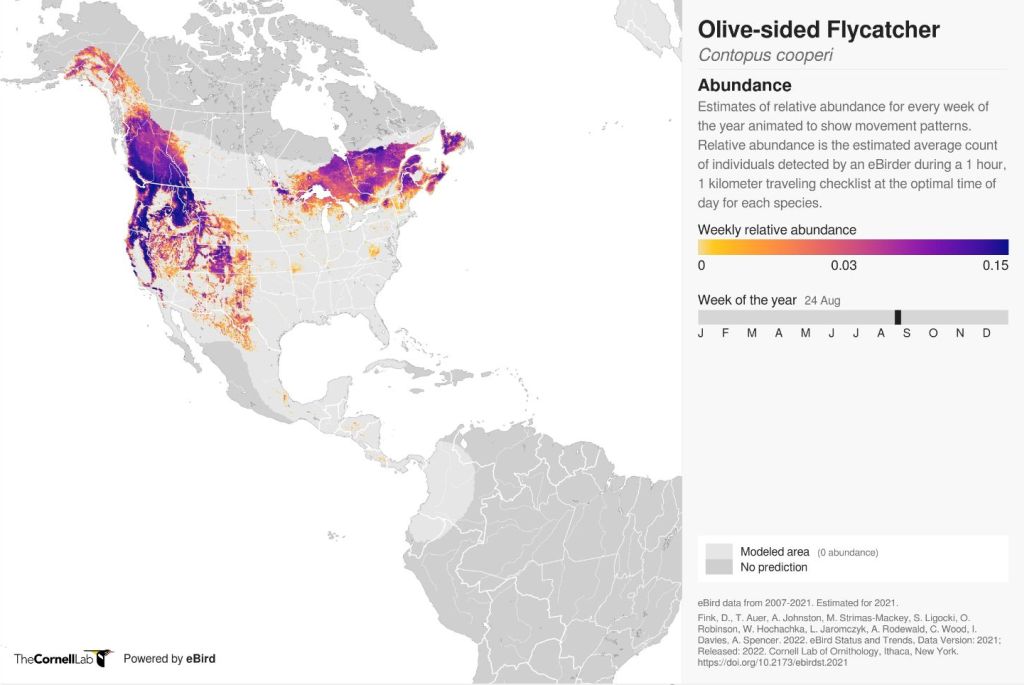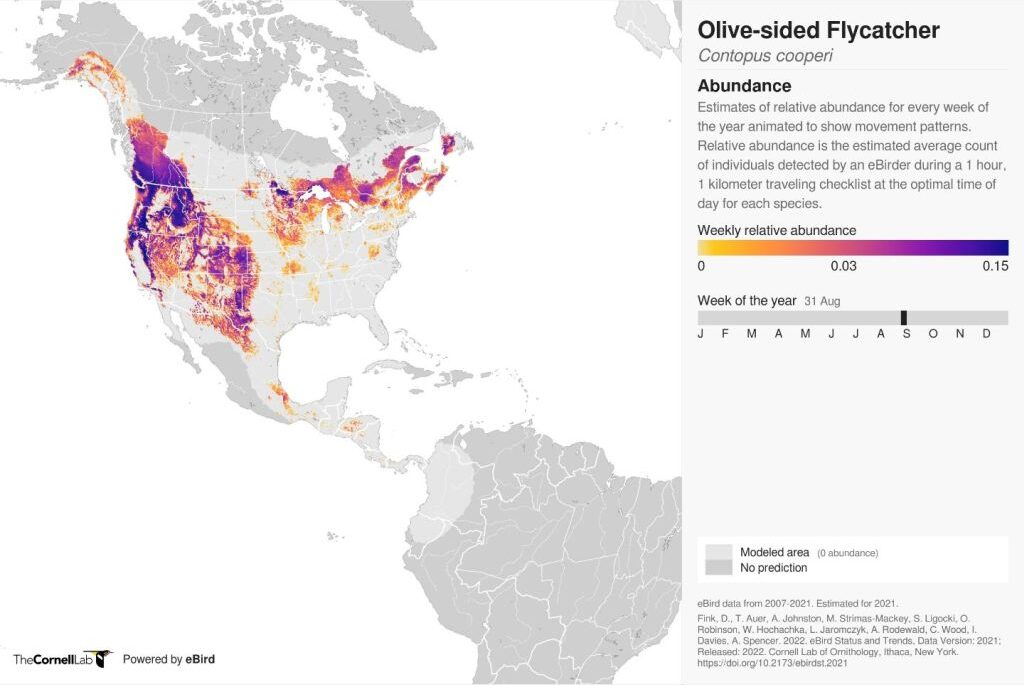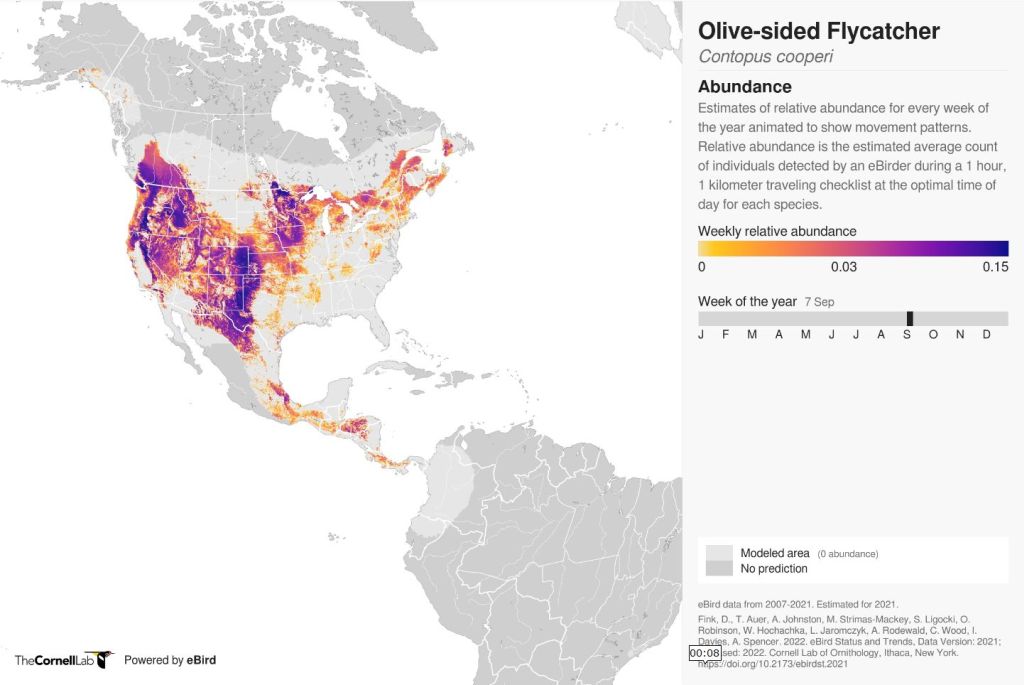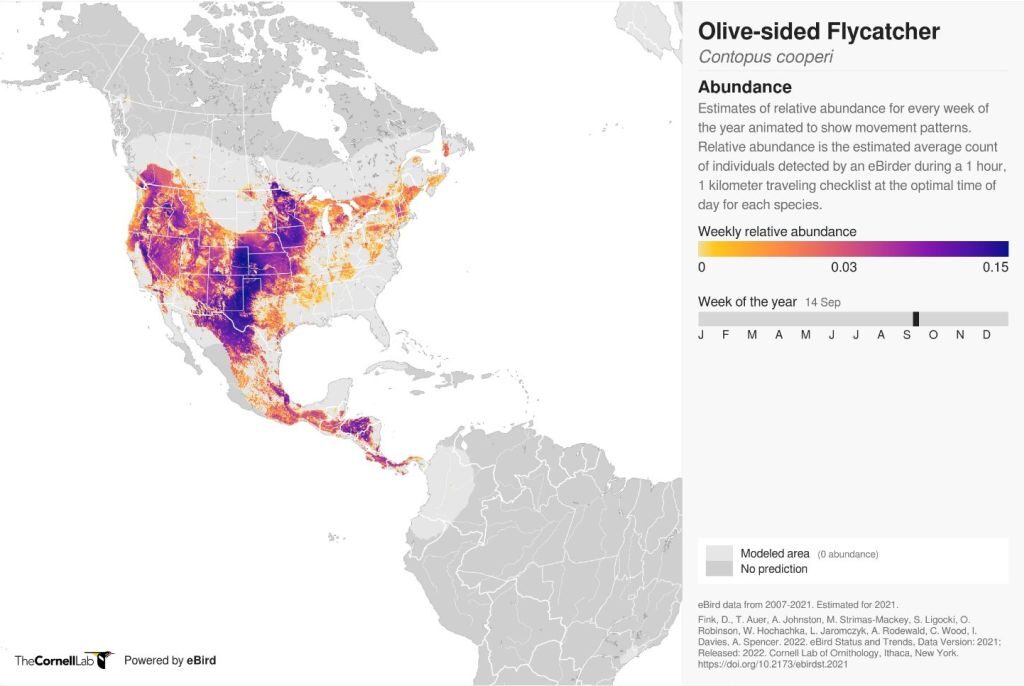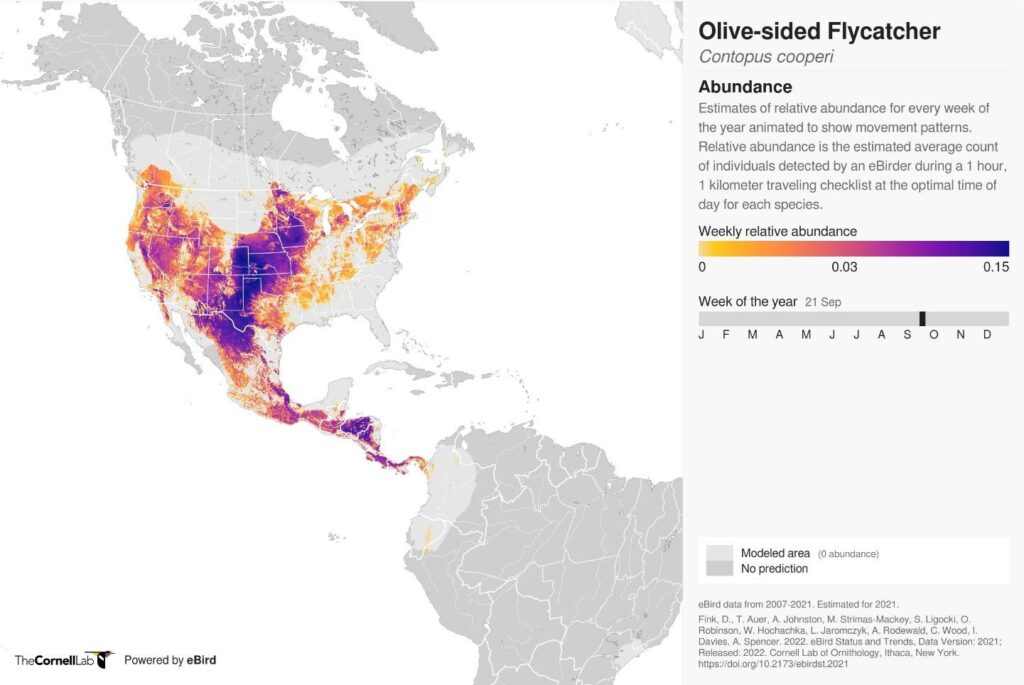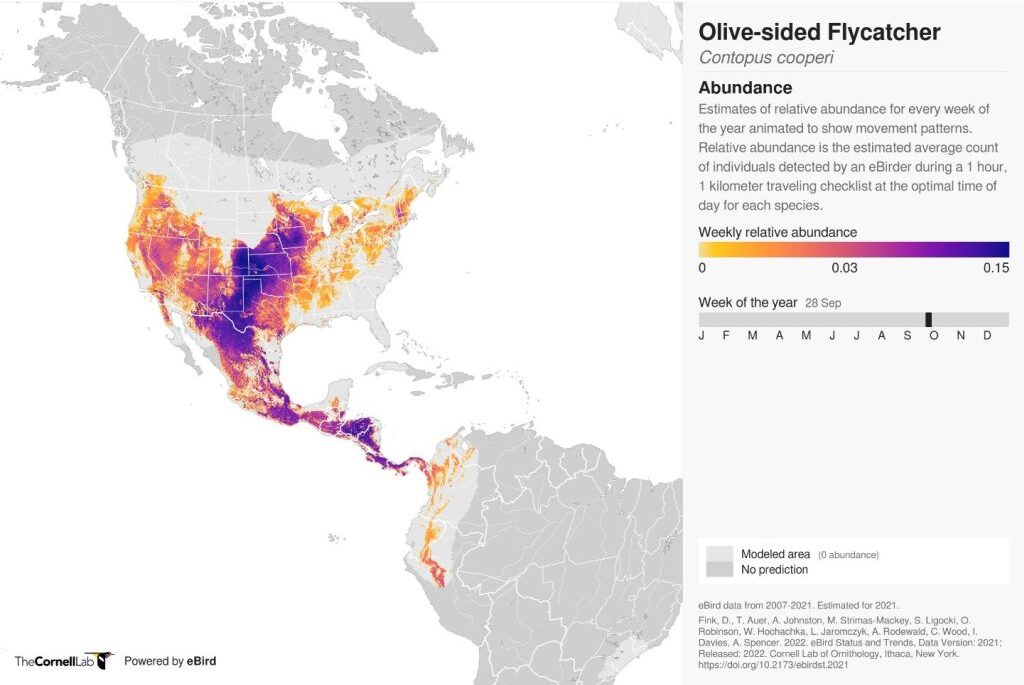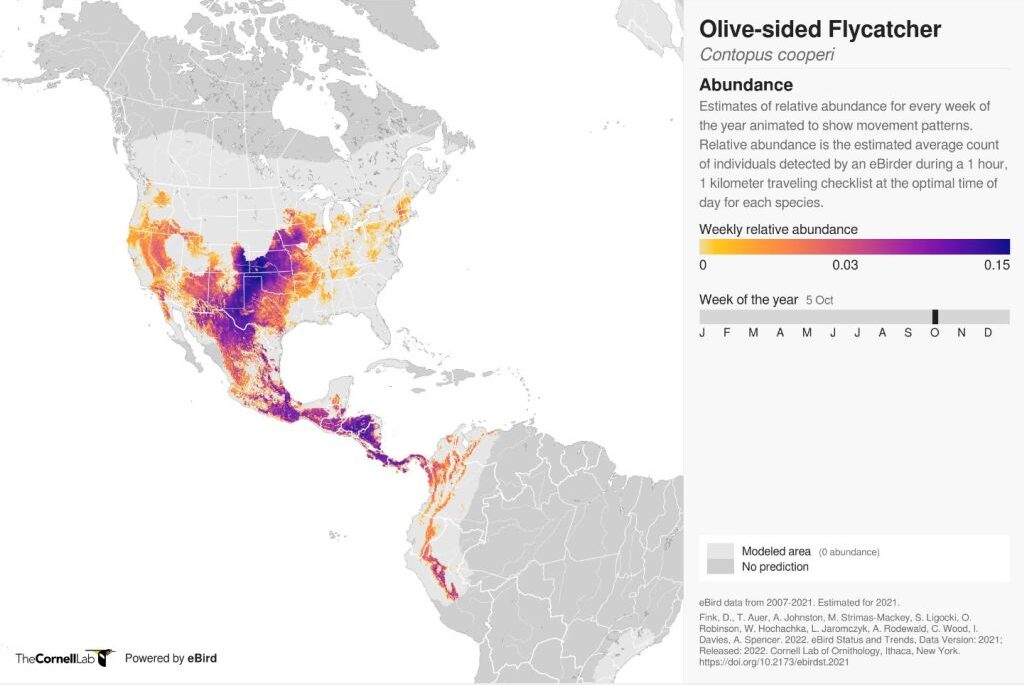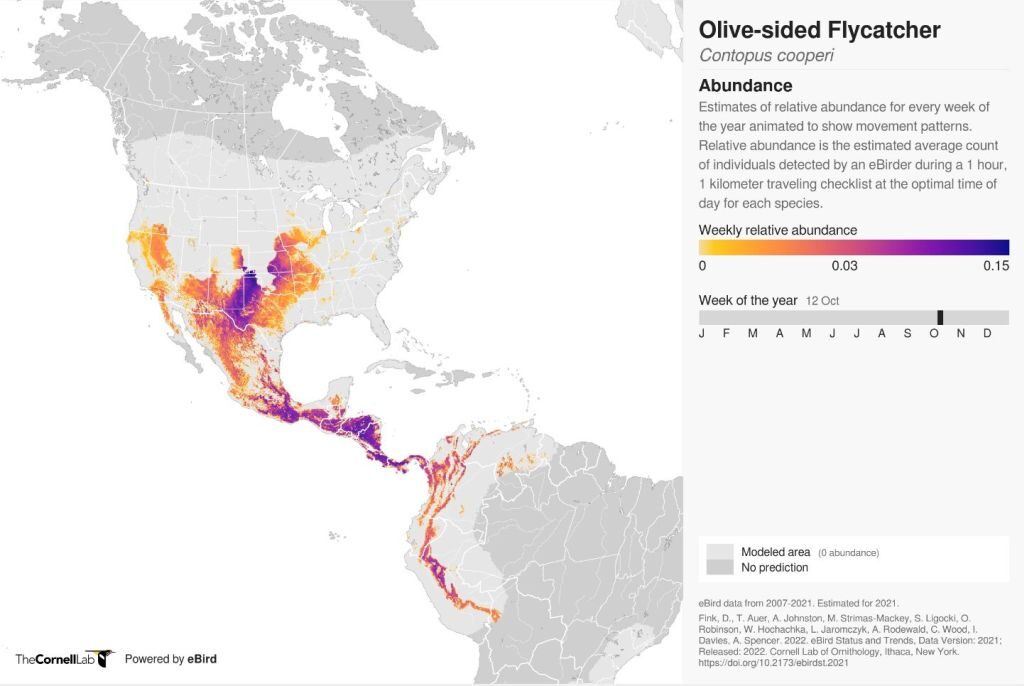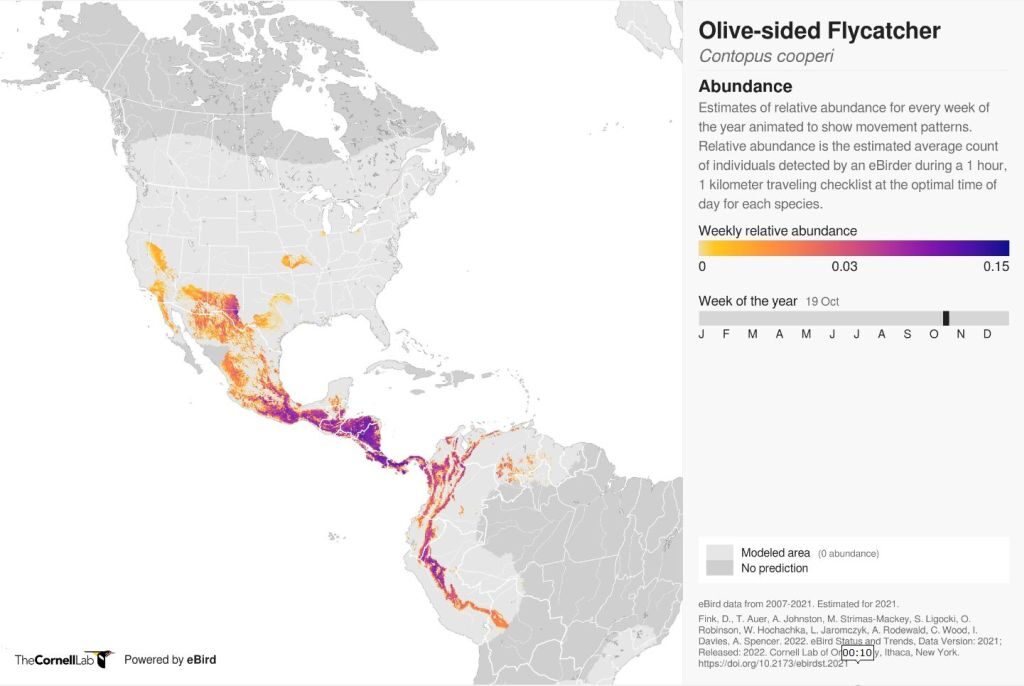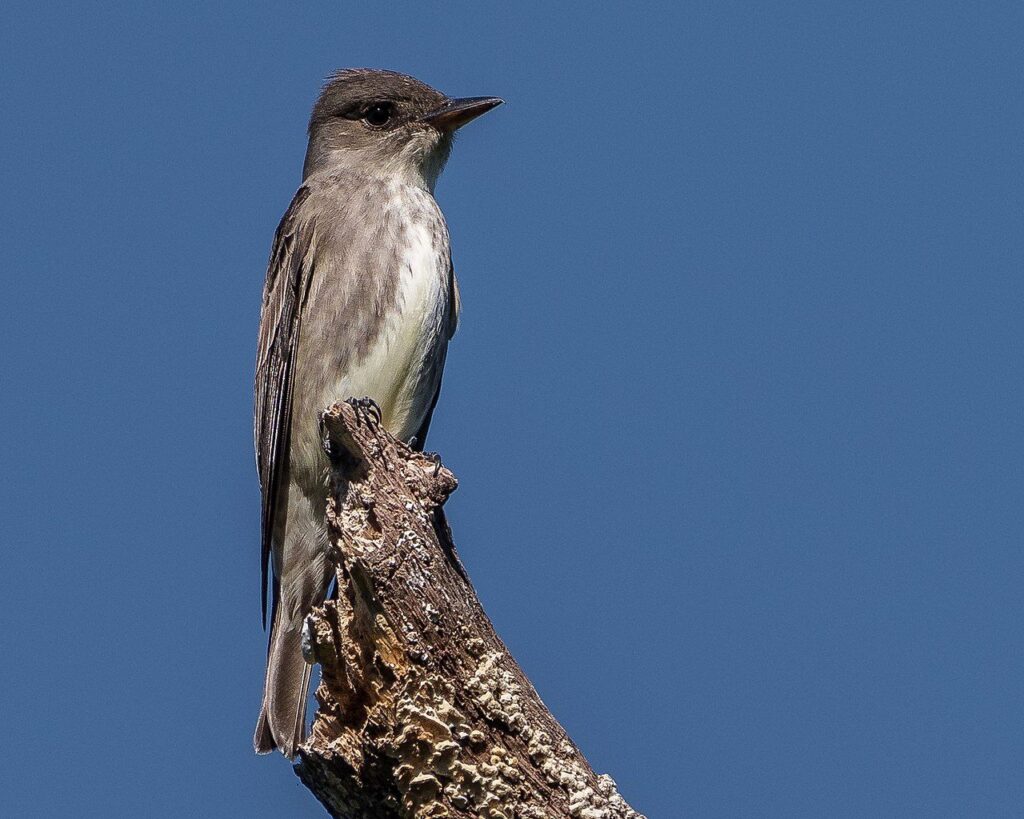
29 August 2023
Olive-sided flycatchers (Contopus cooperi) are rare birds in Pittsburgh. Not only have they declined 78% since 1970, but they are only present on migration and then just one or two per season. When three individuals were found on the same day, Friday 25 August, in Allegheny County it was rare indeed. These three were not the same bird:
- Sewickley Heights Borough Park at 8:20am, seen recently on Monday 28 Aug
- Hartwood Acres, Saxonburg Fields at 10:50am
- Homewood Cemetery at noon
Though olive-sided flycatchers nest from Alaska to Newfoundland and southward into the Cascades and Rockies, not much is known of their migration routes. In the fall the eastern birds generally flow westward within Canada, then hang a left at Minnesota and migrate through the Great Plains and eastern Rockies. You can see their relative abundance from the 3rd week of August through the 3rd week of October in this slide show.
Olive-sided flycatcher weekly relative abundance from eBird Status and Trends
Alaska’s breeding olive-sided flycatchers are declining rapidly and have one of the longest migrations of any flycatcher — from Alaska to Peru. Migratory stopover sites are very important for their survival but nobody knew where they went so a study team, headed by Julie C. Hagelin, decided to track the birds’ migration by catching them in mist nets and attaching geolocator backpacks.
What they discovered when the birds returned is that Alaskan breeders fan out across the Rockies on their way south, some as far east as Texas, before they head through Mexico to South America. They also found 13 important stopover sites that are critical to the birds’ survival on migration. Their favorite spots are slightly different in Central America in fall versus spring. Two of the 13 sites are in the U.S. Cascade Mountains. All the sites are on these maps.
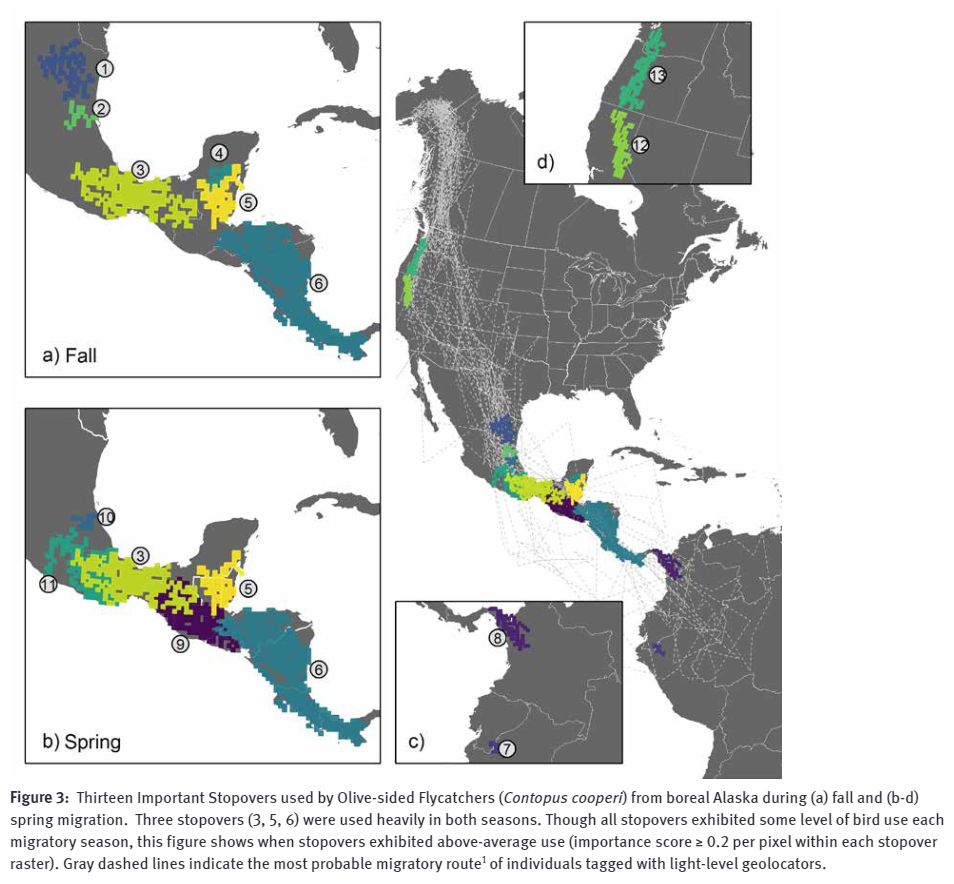
and non-breeding areas of a boreal songbird in
steep decline)
Pittsburgh never figures heavily in the olive-sided flycatcher’s travel agenda though this year we seemed to be an attractive stopover. Our birds probably come from breeding sites in eastern Canada.
Are our olive-sided flycatchers stopping at the same places in Central America as the Alaskan group? We won’t know until some runs a similar study in eastern Canada.
(photo from Wikimedia Commons, abundance maps from eBird, stopover maps from DeGruyter; origin links are in the captions)
